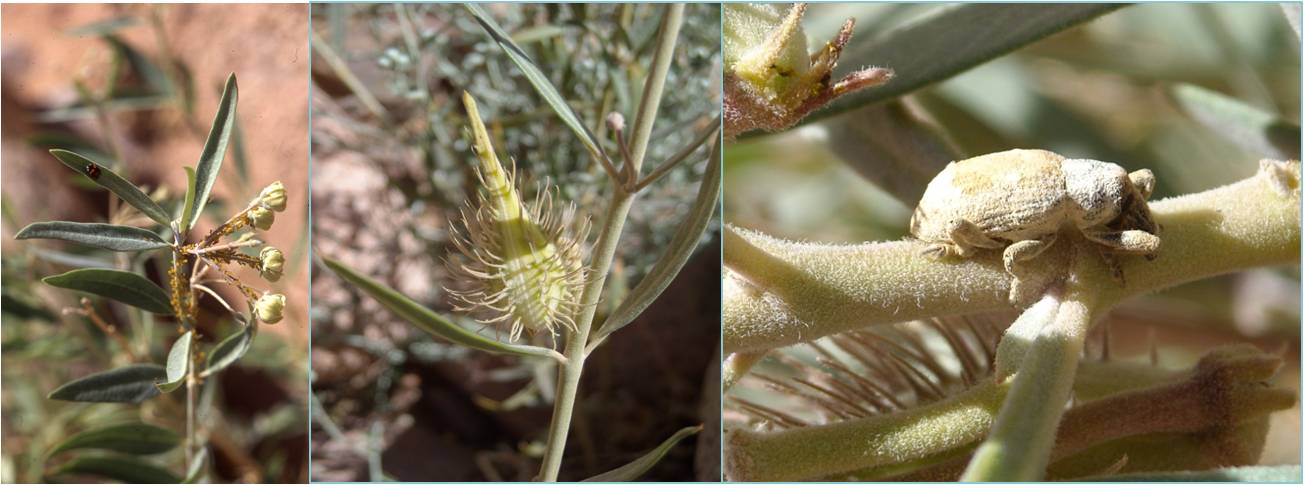| Insect-plant coevolution in South Sinai | Back : Forward |
 Sinai milkweed and its herbivores Sinai milkweed and its herbivores
Another project on coevolution studies the chemical ecology of the relationship between the Sinai milkweed Gomphocarpus sinaica and its insect herbivores. Gomphocarpus is the African sister-group of the New World genus Asclepias: the way asclepiads defend themselves using chemicals (cardiac glycosides and the milky latex) has been studied a lot in the American species, especially A.syriaca. The parallels between the USA and Egypt in the insect herbivores are very striking (see ElBanna et al. 2009). The insect herbivores consist of a generalist but aposematic lygaeid bug Spilostethus pandurus feeding on the stems and pods; a specialist aposematic aphid Aphis nerii sucking phloem from the stems and pods; and a specialist weevil Paramecops sinaitus that feeds on leaves as an adult, and on the seeds as a larva. Initial field and then lab work was carried out by Shereen El Banna (Suez Canal), Dave Shuker (St Andrews) and Simon Elliott (from Liverpool John Moores), with the collaboration of Ian Duce and Ian Mellor (Nottingham) and John Pickett (Rothamsted); further lab work on the assay method was helped by Steve Malcolm (University of Western Michigan) and is now carried out in collaboration with Dave Barrett (University of Nottingham). A number of students have worked on this system: Stine Simensen (PhD 2009-13), Sarah Blake (MRes 2009-10) and Gabi Brown (2011-12) together with several helpers and undergraduates for their final-year projects (Rosie Foster, Freyja Sears, Kate Watson, Bethan McIlroy, Chris Booth, Finlay Galbraith, Emma Shimmens and Ross Ziegelmeier). Various plant fractions have been extracted, identified and tested for activity on locust ion channels and mammalian heart muscle, and the same fractions detected in the bug. Plant alkaloids (cardenolides) vary greatly in concentration among plants, and among plant parts (most in the seed-pod wall). The aphid is apparently the same species as in the USA, and is known to sequester plant toxins and use them for defence. The bug avoids plants with high levels of defence, but contains toxins as well, and presumably uses them in its defence. The weevil does not seem to contain plant alkaloids at all, and presumably detoxifies them: its behaviour is fascinating, and includes 'latex canal sabotage', biting through the midrib before feeding in order to reduce the latex that exudes from damaged lactifers. Selected publications:
|